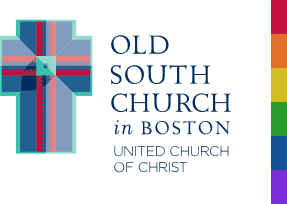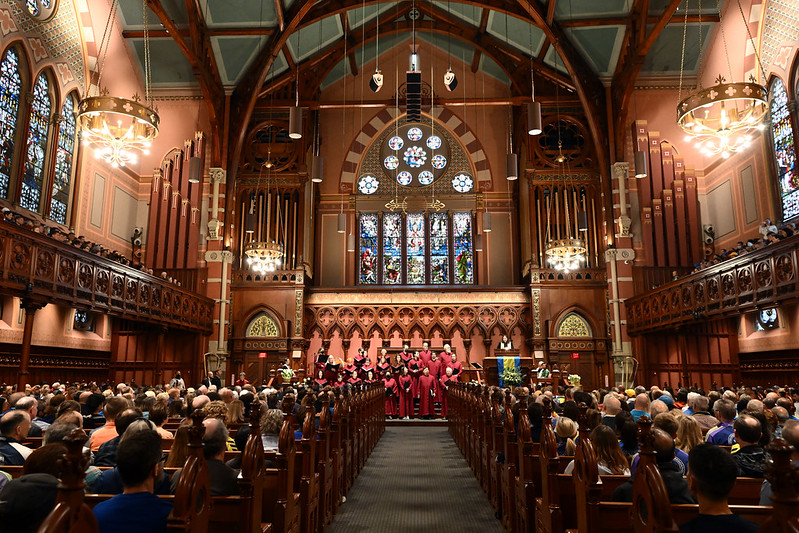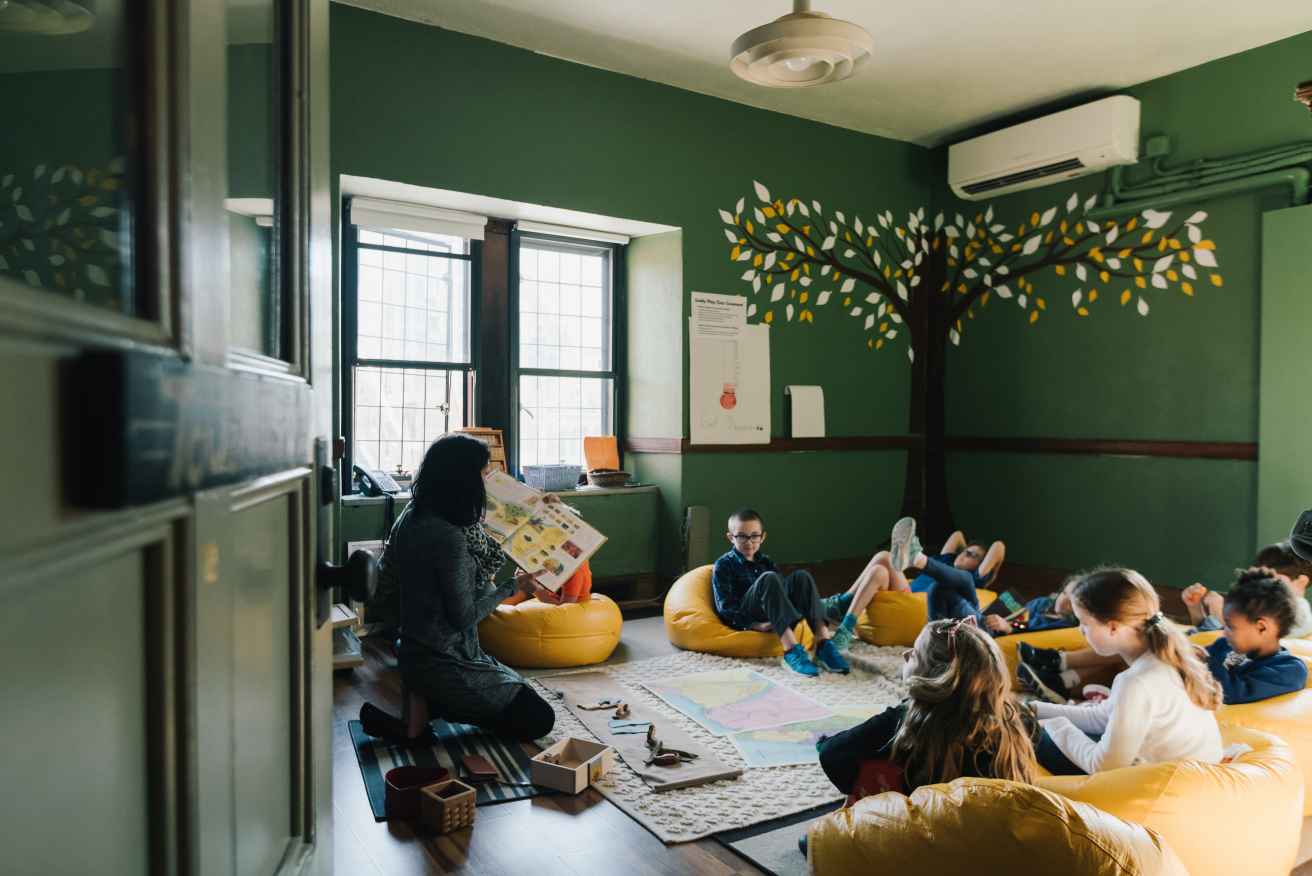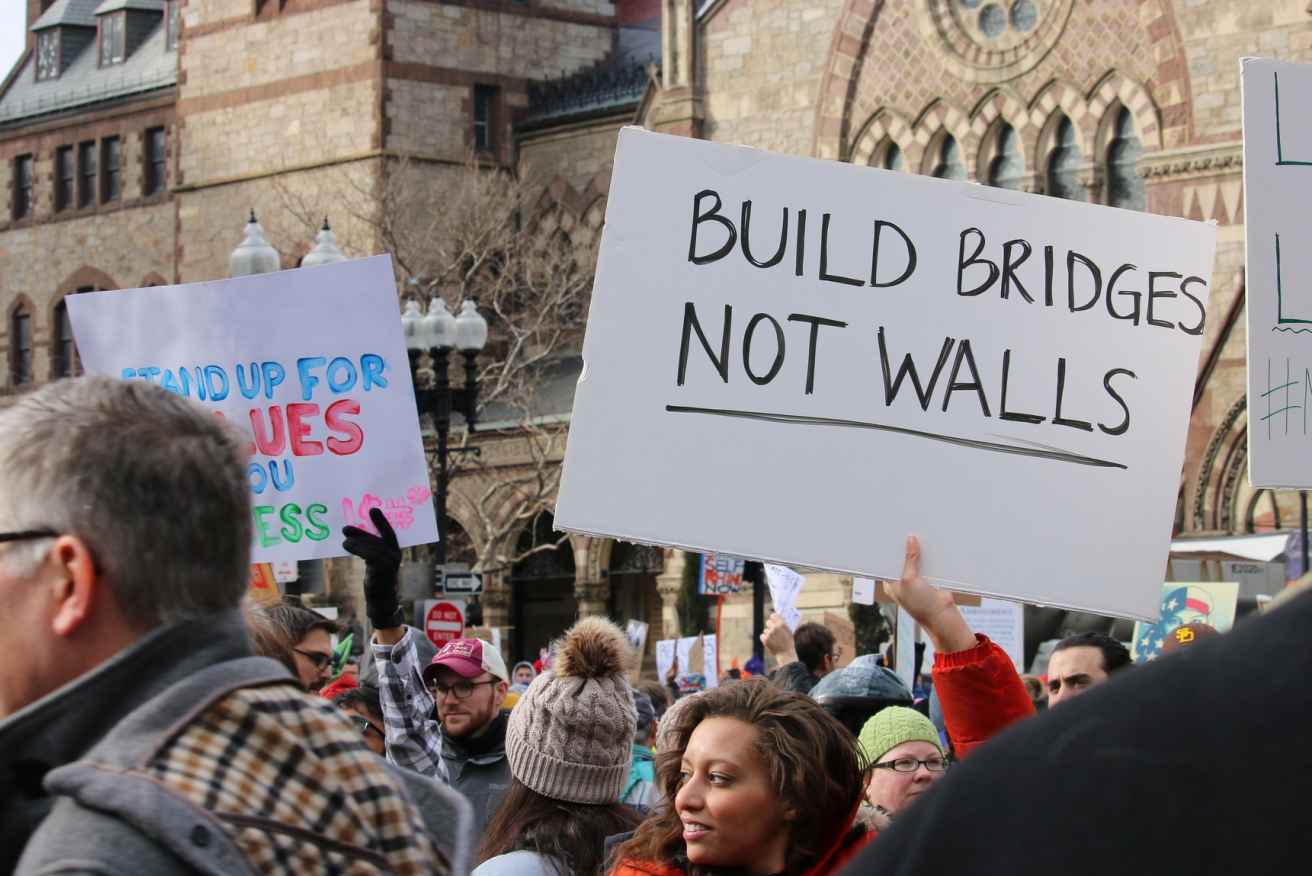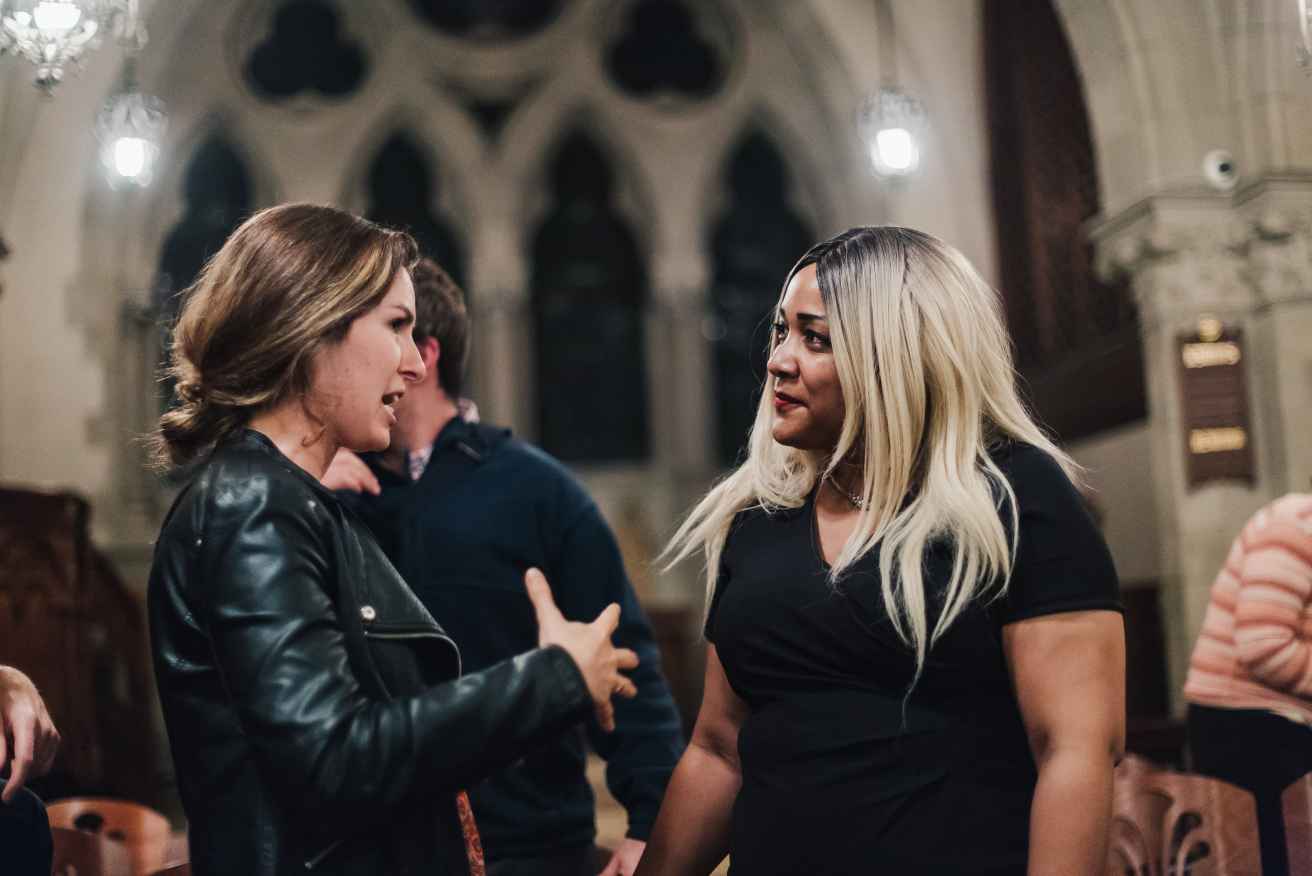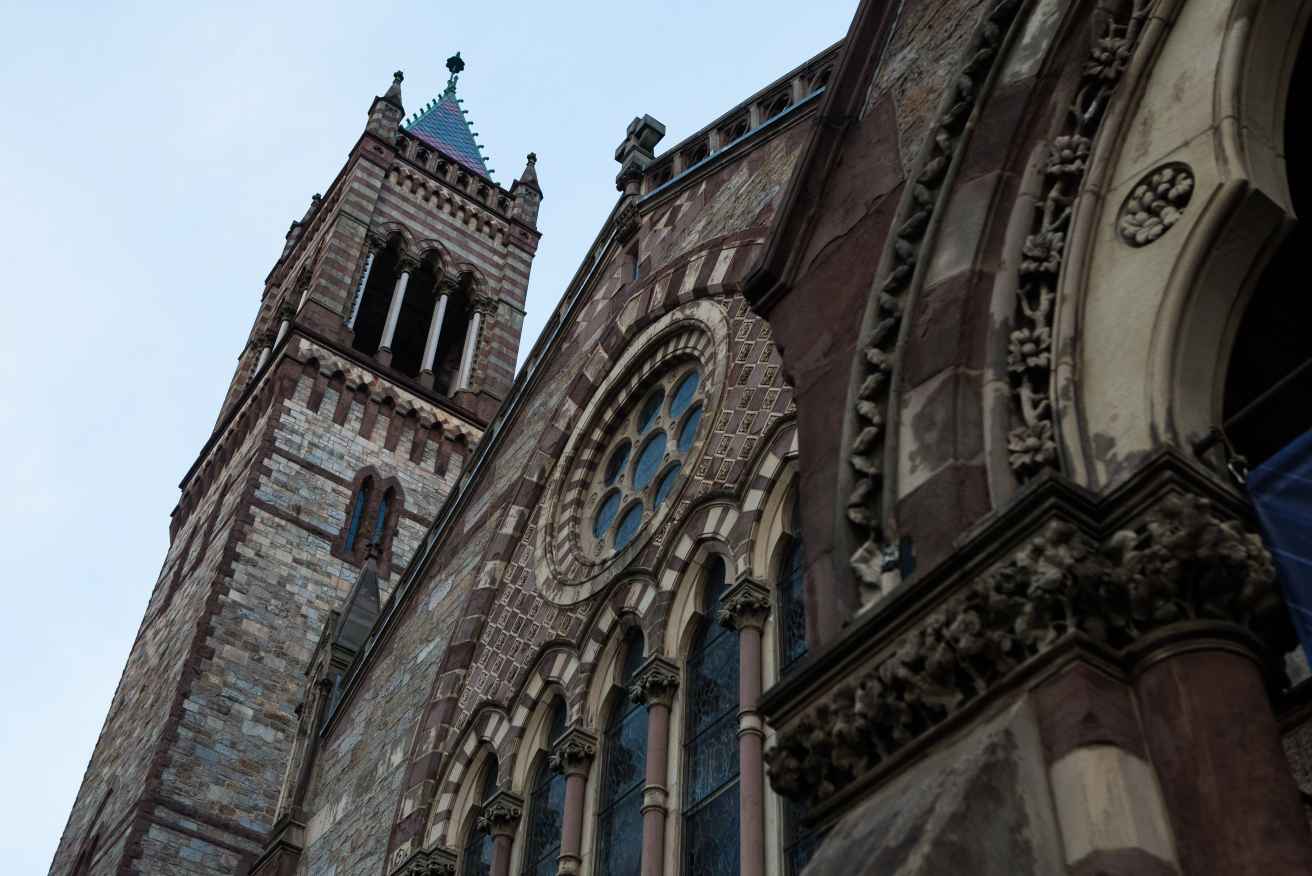Pride Interfaith Service as the node title
Pride Interfaith Service as the node title
Hope Upending and Unending - Pride Interfaith Service
Transcript
Since accepting the invitation to preach on this fabulous occasion, I have been looking at some of the articles and advertising about Boston PRIDE Week. I learned that its official kickoff was the raising of the rainbow flag at City Hall on June 4th and it will end with a “Pride at Night Finale” tomorrow, June 13th. That told me one of two things: you never got the memo saying a week has seven days, or you just felt ten days was the minimum to celebrate 40 years of LGBT progress from “Riots to Rights.” I’ll go with the latter.
Forty years … 1970 to 2010. How many of you can’t remember 1970 because you weren’t born? How many of you just don’t want to remember because it ushered in the decade of platform shoes? (I know some of you still have those platform shoes, but we’ll have to talk about that later.)
1970—a gallon of gas cost 36 cents, Paul McCartney announced the breakup of the Beatles, Tina Fey (aka “Sarah Palin”) was a newborn, and I graduated from high school.* As you are probably well aware, what we now call “PRIDE events” began in June of 1970 under banners proclaiming “Gay Liberation” or “Gay Freedom.” They commemorated the uprising at a New York City gay bar called the Stonewall Inn, in June of ‘69. As author Charles Kaiser describes it:
“...a handful of New York City policemen began a routine raid of a Greenwich Village nightspot, and the drag queens, teenagers, lesbians, hippies—even the gay men in suits—behaved unlike any homosexual patrons had ever behaved before … For the first time in history, ‘The cops got what they gave.’ This had never happened before.1
Some extol the several days of the Stonewall Rebellion as the beginning of the modern LGBT rights movement. Others contend that such a description diminishes the less well-known, often quieter, but truly essential work for equality that went on in the 1940s and 50s—and even before. In any case, it is widely agreed that Stonewall was a pivotal moment in the history of the ongoing, global struggle to recognize the dignity and equality of persons who now identify as transgender, questioning, bisexual, intersex, lesbian, gay, queer, asexual, same-gender-loving, two-spirit, by many other names—or none at all. There are, of course, histories within our history, and one of them is that of LGBT people of faith in this country and our allies. One pivotal moment in that came in 1964, five years before Stonewall, and four years before the landmark founding of the Metropolitan Community Churches. It happened at a retreat near San Francisco. An unprecedented gathering brought together twenty-some people—clergymen (and I do mean “men”) and homosexual activists for face-to-face dialogue. Using the pseudonym “Billie,” one of the lesbians who took part in that occasion shared her memories with historian, Eric Marcus:
“Del [Martin] and I deliberately arranged it so all the participants were brought there and dropped off. We did it that way so no one could leave. To put it bluntly, they came to convert us, and we came to convert them. The very first night they served us dinner … There were barriers of communication that could not be bridged that night. The gals sat here. The guys sat over there.
And the ministers were all the way over there. We started early the next day. One representative from each group started with an opening statement … Then we broke up into small groups ... By the time we went to lunch people were talking everywhere. And that night … it was impossible to go up the stairs to your room, because people were on the stairs, just talking together … It was marvelous. This was the first time that many of those ministers had met face to face with someone who said, ‘I’m a homosexual.’” 2
Out of this gathering came the Council on Religion and the Homosexual. According to the Online Archive of California, the Council was the first group in the country to put the word “homosexual” in its name.
Over those early years, more groups and opportunities arose and people of various genders and sexual orientations—Jewish, Roman Catholic, and Protestant—talked about what for so long had been “the love that dare not speak its name.”3 As people came together in these early attempts at understanding and dialogue, I can only imagine how they laid awake the night before thinking, “What should I wear?” I can only imagine how hard their hearts pounded as they entered meeting rooms and thought “What the heck am I doing here?” I can only imagine how their hope for change and healing upended some of their fears and assumptions, giving many of them a sense that God “was making a way out of no way.”
Surely those folks would have resonated with the experience of Abraham, which we heard in this morning’s Biblical texts. Abraham—a “founding father” of three great religious traditions, whose elder child, Ishmael, is the significant son for Islam and whose younger son, Isaac, is a key figure in Judaism and Christianity.
In the first scripture reading, it is the long awaited birth of this second child that is the focus. God has established an “everlasting covenant” with Abraham, which rests on the most fundamental of promises: I will be your God. And this covenant is to extend to all the offspring of Abraham and his wife Sarah. God assures them they will be fruitful and have descendants “as numerous as the stars.” Abraham, faithful though he’s been, gives a quick thought to his and Sarah’s biological clocks and then falls over laughing, mumbling to himself, “Can a child be born to a man who is a hundred years old? Can Sarah, who is ninety years old bear a child?” (You can bet Sarah was way ahead of him in thinking about that!)
In the second reading, the apostle Paul writes to the church at Rome (around the year 57 C.E.) to those of Jewish background, like himself, as well as non-Jews (Gentiles) to encourage them in their life of faith together. In this text, we have a more composed Abraham, of whom Paul says, “Hoping against hope,” he believed that he would become ‘the father of many nations’” despite the fact, as Paul bluntly puts it, his body “was already as good as dead” and, so far, Sarah had not had children. Even when it seemed impossible, says Paul, they believed “that God was able to do what [God] had promised.”
Through this ancient story, Paul urges all in the congregation at Rome to hold fast to the basics—to trust in the Holy One in whose image they were created, who promises to be their God; to trust in the Holy One who brings life out of death. Out of reliance upon the Source of Life, they would find hope in even the most daunting moments, a belief expressed often in the Bible, as in these beautiful words from the book of Jeremiah:
Blessed are those who trust in the Lord, whose trust is the Lord.
They shall be like a tree planted by water, sending out its roots by the stream.
It shall not fear when heat comes and its leaves shall stay green, in the year of drought it is not anxious, and it does not cease to bear fruit. (Jeremiah 17:7-8)
So many of us have “hoped against hope” in our personal lives. We have hoped against hope when coming out to families and friends—that we would still have their love on the other side of that conversation. We have hoped against hope that if the boss found out about our partner on Friday, we’d have a job on Monday. Our loved ones have hoped against hope that we will be safe and happy in a world still too often inhospitable to us.
Confident that God, in the myriad ways we name and construe that reality, is there for us, in the last forty years, LGBT people have brought this same tenacious hope to upending religious discrimination. And things have come to pass that once seemed as “pipe dreamy” as Sarah’s birthing Isaac: openly LGBT ministers and rabbis, thousands of Welcoming congregations of many traditions, liturgies that honor our coming out, out unions and marriages, our transitions of gender—and more. Once non-existent, LGBT groups of youth, persons of color, transgender folk, and others nurture our spiritual lives and advocate for justice. Transforming the religious landscape are organizations like Dignity (Roman Catholics), Al-Fatiha (Muslims), Integrity (Episcopalians), Reconciling (Methodists), Supportive (Brethren & Mennonites), Gay Buddhist Fellowship, and Jewish Mosaic—to name only a few. Planted by the stream of Eternal Love, the leaves of our hope have stayed green in the heated days of political and legal struggle, as people of faith have contributed to changes, once thought impossible. Consensual, adult sexual activity is no longer criminal, hate crimes legislation includes sexual orientation and gender identity, and equal marriage is gaining ground.
As you well know, however, hope is not magic; it doesn’t always get us what we want. Hope is not what guarantees the outcome we desire; hope is what guarantees that we can stay in the struggle for what God desires—a world of compassion, justice, and peace. To do this, we envision what might be even as we face what really is. As Sr. Joan Delaplane, O.P., Professor Emeritus of Preaching at Aquinas Institute reminds us: “We are not talking about pie-in-the sky optimism that does not look reality in the eye. We are talking about hope that sees with the eyes of faith and love. [Theologian Jurgen] Moltmann says that we come to know the truth of hope ‘if we are forced to stand our ground against despair. We come to know its power when we realize that it keeps us alive in the midst of death.’” 4
During my years of Open and Affirming ministry in the United Church of Christ, I met a young woman named Erica Bowman, who was passionate about creating Welcoming congregations. In her college application essay, she shared her profound despair and hope, when the church in which she grew up voted not to publicly welcome LGBT persons, not to be Open and Affirming:
“I knew the names of all the regular members and the location of each silverware item in the kitchen. I wore the choir robe labeled number ten. I knew that the soda machine in the closet sometimes gave two sodas … I sat anxiously on a familiar blue pew cushion inside of my church home … I watched my pastor read the vote ... Suddenly the place and faces that had nurtured my spirit since birth looked unfamiliar and confusing … I worked and spoke out for what I believed in as much as I could; it was exhausting and gratifying.
The vote was the result of the congregation’s beliefs, and I affirm their right to hold those beliefs. For me, however, I thought that the best action I could take was to grip tightly onto what I believe and humbly walk away … It is my hope that the people there who watched me grow up and ultimately watched me walk away will be able to look back and ask questions about their own faith. Although I have left my childhood church home, I have not abandon my commitment to working towards inclusive faith communities … Since leaving, I, along with my mom, have been working on creating a new faith group in my hometown ...” 5
We have come a long way, babies,6 since 1970, but as long as the Ericas of our world must search for a spiritual home, as long as there are laws from the U.S. to Uganda that imperil our lives and families, as long as HIV and AIDS still affect so many of us, as long as LGBT youth still wonder if God loves them, may faith-full hope, in all its sacred wonder and power, keep us in the struggle to transform and bless the world.
“LGBT” stands for “lesbian,” “gay,” “bisexual,” and “transgender.”
Words in the sermon which appear in brackets [ ] have been added for clarity.
*Sites that provide interesting information about 1970 include: www.thepeoplehistory.com and www.pop-culture.us
1. The Gay Metropolis: 1940-1996 by Charles Kaiser, 1997. p. 197-198.
2. Making History: The Struggle for Gay and Lesbian Equal Rights,
1945-1990 (And Oral History) by Eric Marcus, 1992. p. 78-79.
3. A phrase associated with homosexuality, it comes from the poem, Two Loves, by Lord Alfred Douglas, 1896. (www.phrases.org)
4. “A Future Full of Hope: Excerpts from a Sermon” by Joan Delaplane, O.P.
in the journal, The Living Pulpit (Theme: HOPE), January/March 2000. p. 15.
5. “Erica Bowman’s College Application” in WAVES, newsletter of The United Church of Christ Coalition for Lesbian, Gay, Bisexual and Transgender Concerns, March 2004. p.7.
6. “You’ve come a long way, baby”—a slogan used by Philip Morris in ads for “Virginia Slims,” its cigarette first marketed to women in the late 1960's. See: www.wikipedia.org (It became a phrase often used, as here, to note progress having been made by an individual or group.)
General Credit: Of the many books and articles which provided background reading for this sermon, I wish to mention several. The entire edition of The Living Pulpit (Note 4) provided much food for thought; I find it a very good preaching resource. In that journal edition, in addition to the article above, another of particular help was the section on “Hope and Struggle” (p. 34-36), citing writing from Dorothee Soelle in her book To Work and To Love. I am also especially appreciative of these resources on the scripture: Preaching the Revised Common Lectionary: Feasting on the Word (Year B, Vol. 2), Bartlett and Taylor (eds.) 2008; Preaching Through the Christian Year B, Craddock, Hayes, Holladay, and Tucker, 1993, and the chapter “Hope in God”in These Three: The Theological Virtues of Faith, Hope, and Love by Elaine A. Robinson, 2004.
